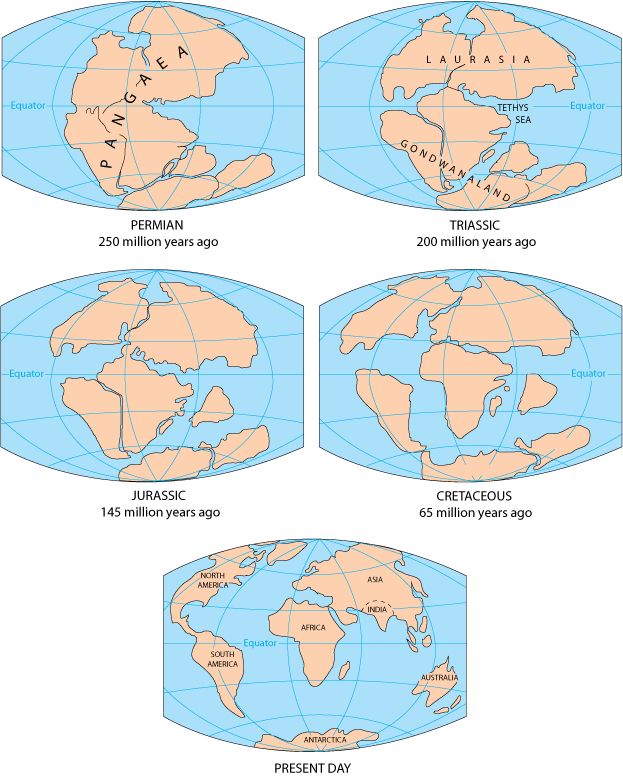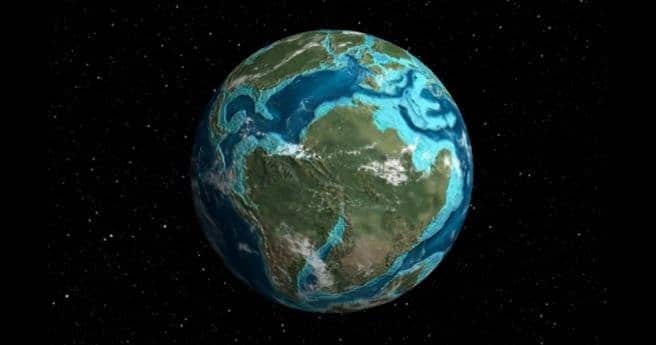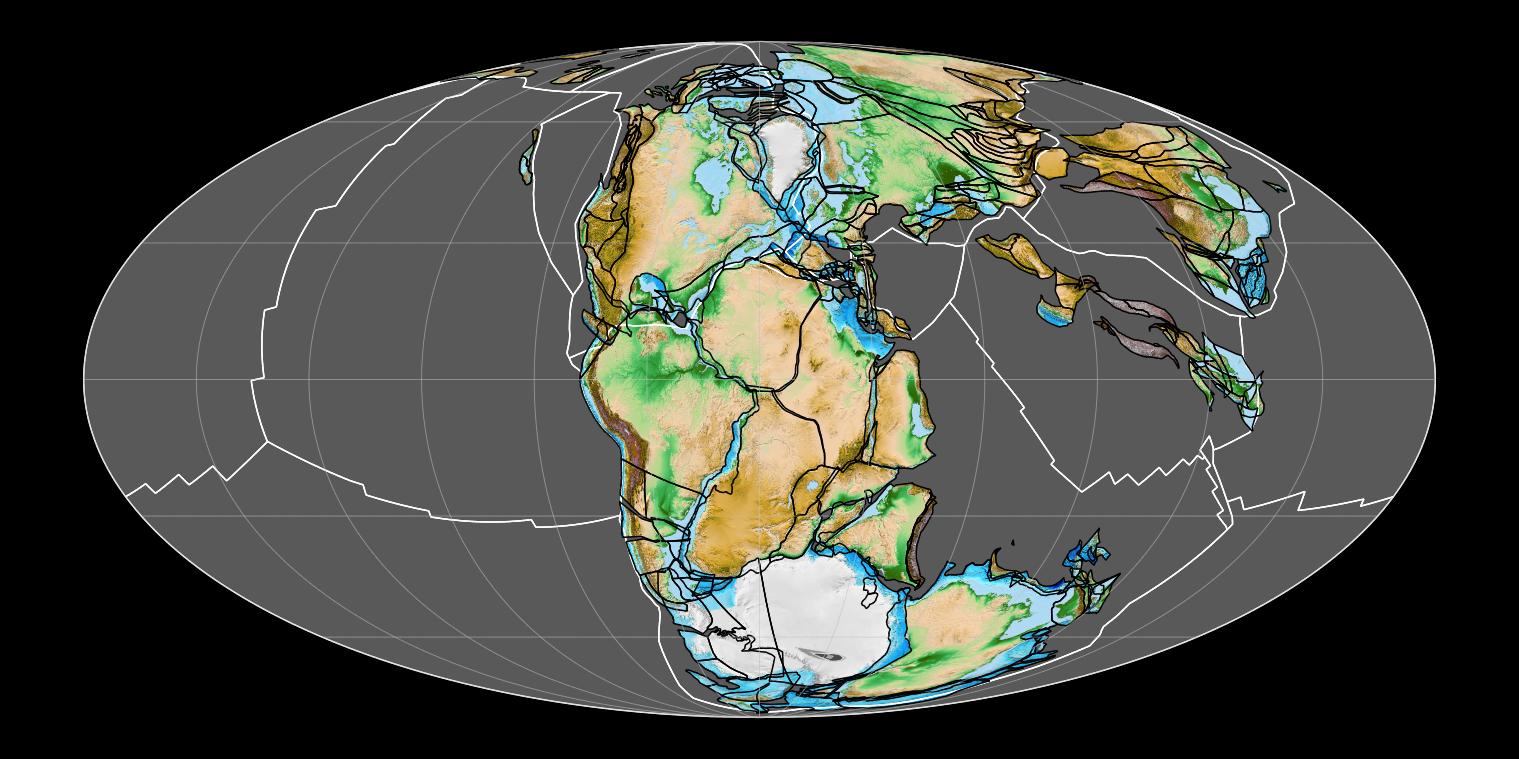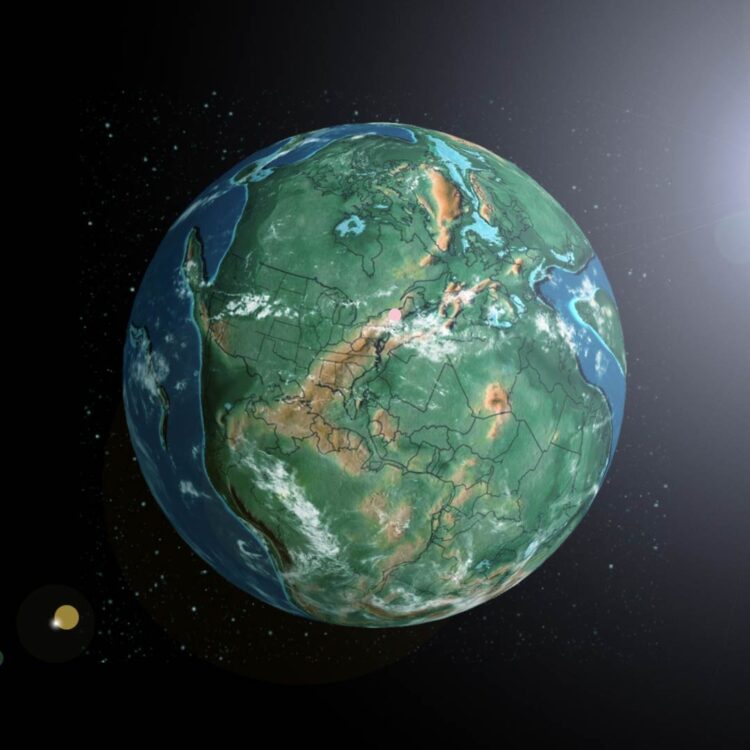Our geography textbooks tell us how once, the land was one big mass with all the continents clubbed together. The 7 continents Asia, Africa, North America, South America, Antarctica, Europe, and Australia as we know them were together called Pangaea.This existed back in the late Paleozoic and early Mesozoic eras.
It began to break about 175 million years ago and is the most recent supercontinent to be successfully reconstructed by geologists. While the concept of Pangaea (derived from Ancient Greek meaning whole Mother Earth) seems unreasonable due to the current positioning of the continents; however, fossil studies, paleomagnetic, continuity of mountain chains, etc contribute to its evidence. Why did the supercontinent break apart? There are three stages of this process.

Pangaea began to rift from the Tethys Ocean. This led to the creation of the Atlantic.
The landmass of Gondwana separated into multiple continents.
Oceans continued to expand as Laurasia split.
The breakup of Pangaea was also supported by climate change.
The tectonic plate’s motion, that is, the theory of plate tectonics suggested that plates that make up the lithosphere of Earth underwent movements about 3.3 to 3.5 billion years ago. Built on the concept of continental drift, the theory also says that the relative motion of these plates helps determine natural calamities such as earthquakes and volcanic activities.

Researchers today claim that the Earth’s crust is ever-changing. The plate tectonics hasn’t terminated yet. It is assumed that our planet will undergo various changes over the next 200-250 million years.
Michael Way or Mike, a physical scientist at The NASA Goddard Institute for Space Studies in New York City led a study and came to two different scenarios that may be possible in the future.
By keeping in mind factors such as an increase in the sun’s brightness, a slightly slower rotation rate, and climate change they assessed the situation.
According to a study the researchers say “In one case the present-day continents form into a single landmass near the equator, and in the other case Antarctica stays put, but the rest of the present-day continents are mostly pushed well north of the equator”. This was published in a journal under the name “The Climates of Earth’s Next Supercontinent: Effects of Tectonics, Rotation Rate, and Insolation”.

The two formations that are likely to occur are:-
- Aurica- A low latitude supercontinent. It will have relatively less ice and snow with a mean temperature ranging around 20 degrees celsius.
- Amasia- A high latitude northern supercontinent ( along with a smaller Antarctic subcontinent). This landmass will develop ice sheets and revert back the sun’s heat.
The researchers behind this claim also mention that “The main factor in these differences is related to the topographic height of the high latitude supercontinents where higher elevations promote snowfall and subsequent higher planetary albedos”.
Ross Mitchell, a graduate student at Yale University in his research thesis says that it wouldn’t be new for these large landmasses to collide with each other. There have been 3 instances of this grouping or maybe 4. He says by the time it’ll happen human life may be extinct.
Also Read : A Massive Solar Storm Might Strike The Earth Triggering A Potential Internet Meltdown
















